The FieldKit team is incredibly honored to be one of the 20 finalists in the 2019 Hackaday Prize!

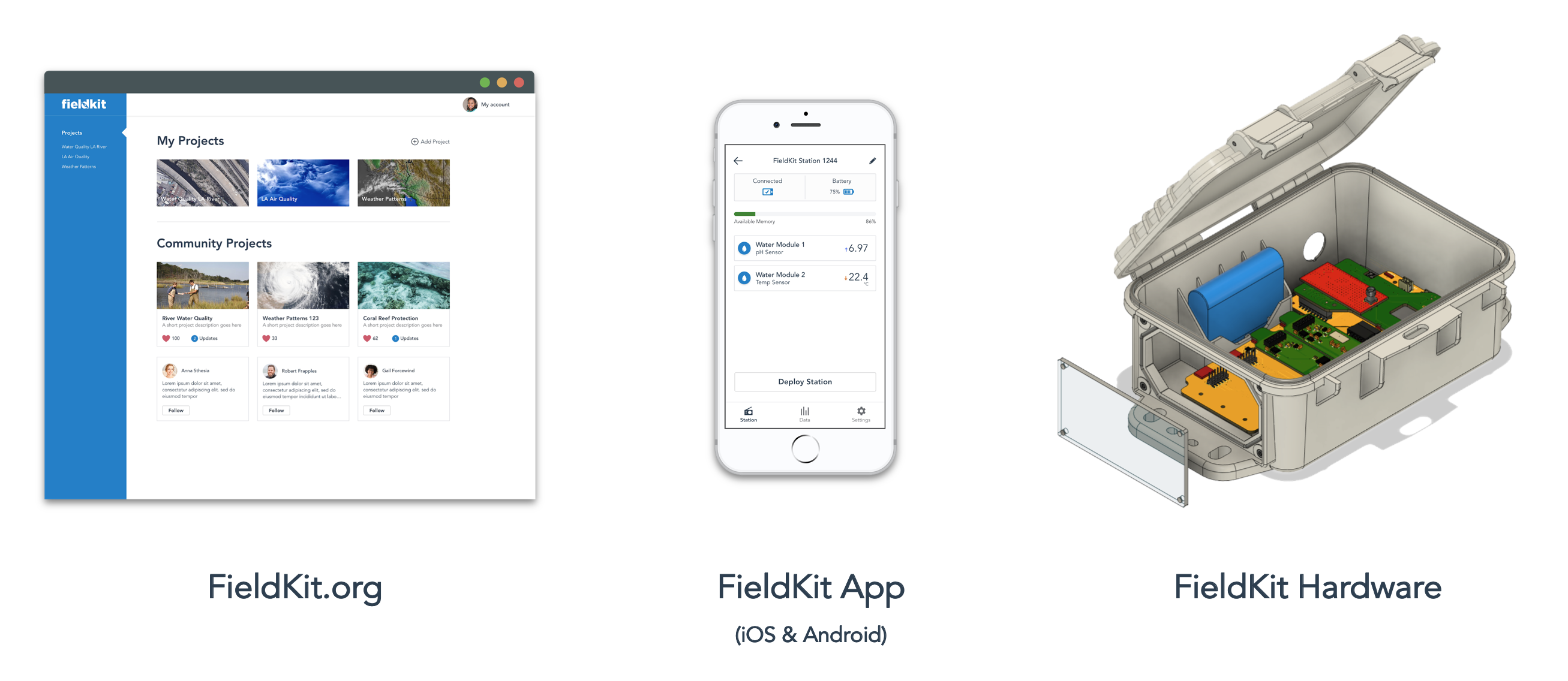
The Problem
Our understanding of this planet and how it changes has always been driven by our ability to measure and monitor key environmental parameters. In the past, this was a very labor intensive process where scientists would use custom specialized equipment to make observations over time. As technology advanced, so did our ability to make those observations. It allowed us to measure more areas, gather data at a greater frequency, switch over to digital methods, and measure with greater accuracy and precision than generations before.
These advances have allowed scientists (and now naturalists or citizen scientists) to monitor our changing planet in new and exciting ways. Up until very recently, those tools were produced by only a handful of for-profit organizations using proprietary designs at expensive price points. More often than not, those tools often lacked a strong software component to complement the hardware. This availability problem has created a rift, where the ability to do good science or effective environmental monitoring was only available to those with the most resources. In our experience working in the field outside of the United States, we’ve found that these tools are very rare and increasingly difficult to obtain.
As completely apparent through the diversity of work here on Hackaday.io, the incredible explosion in accessible technology and manufacturing has created considerable opportunity to rapidly build and prototype new tools across industries. With FieldKit, we are working to bring this innovation into the field of scientifically-relevant environmental sensing. The current marketplace for these tools is polarized, with one side being made up of high-end and very expensive scientific sensing equipment and the other side being made up of microcontroller-based systems that use cheap and scientifically-meaningless sensors. Both of those product areas have a useful place with certain customers, but there was an entire segment of the market that was being left out. We found that there is a large gap in the industry where a modular platform could be designed that met the needs of science but aimed for the costs of consumer and hobbyist devices. Our goal became the following:
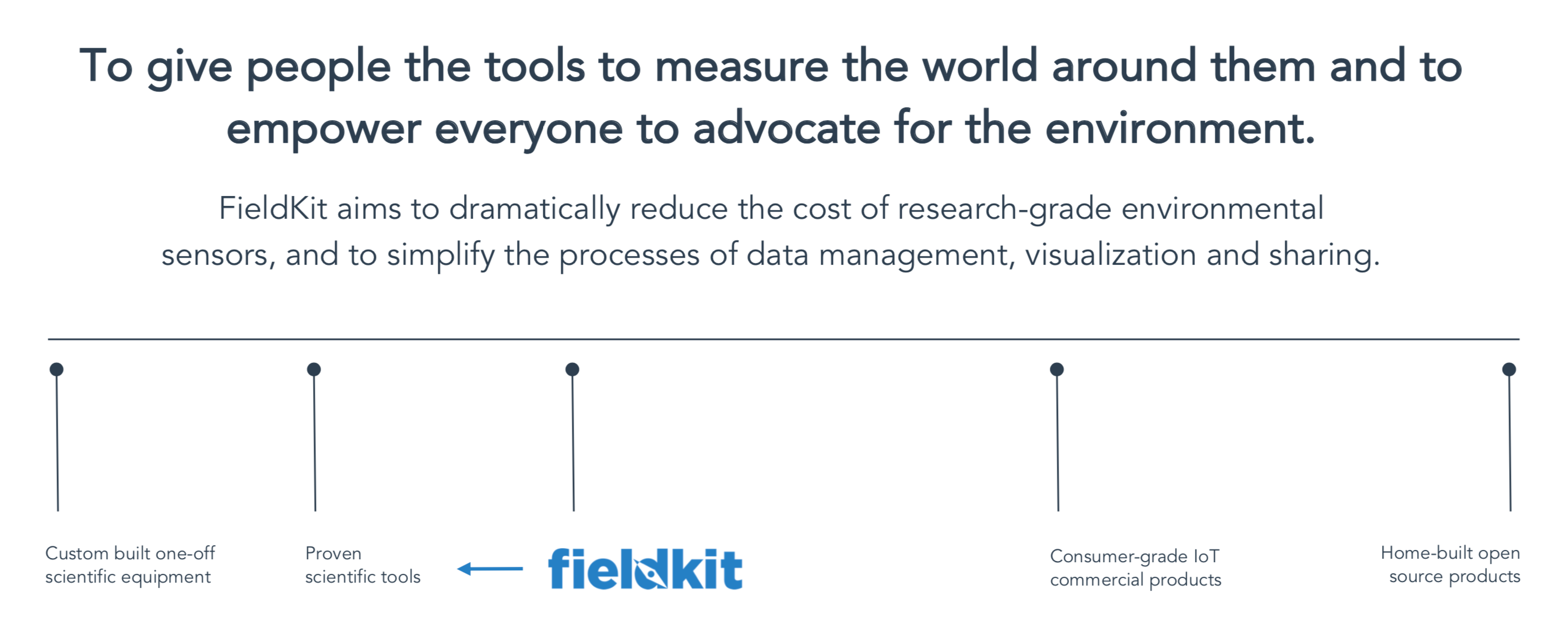
Our Solution
As we started designing FieldKit, we thought deeply about what it was that we wanted to create. We used our past expertise in designing conservation technology for the field with partners like the National Geographic Society and the Wildlife Conservation Society. We conducted rigorous prototype testing in the field in places like Botswana’s Okavango Delta and the Amazon Rainforest. We performed extensive user testing and expert interviews to better understand the needs of the community. We attended conferences and read academic papers that focused on environmental sensing technologies and its necessary metadata and data visualization needs. We tested some of the existing tools and tried to identify what was missing. Through that process, we discovered that there was a much bigger demand for these types of tools than we first expected. Up until that point, we mainly worked with field scientists and (in a much smaller capacity) STEM educators.
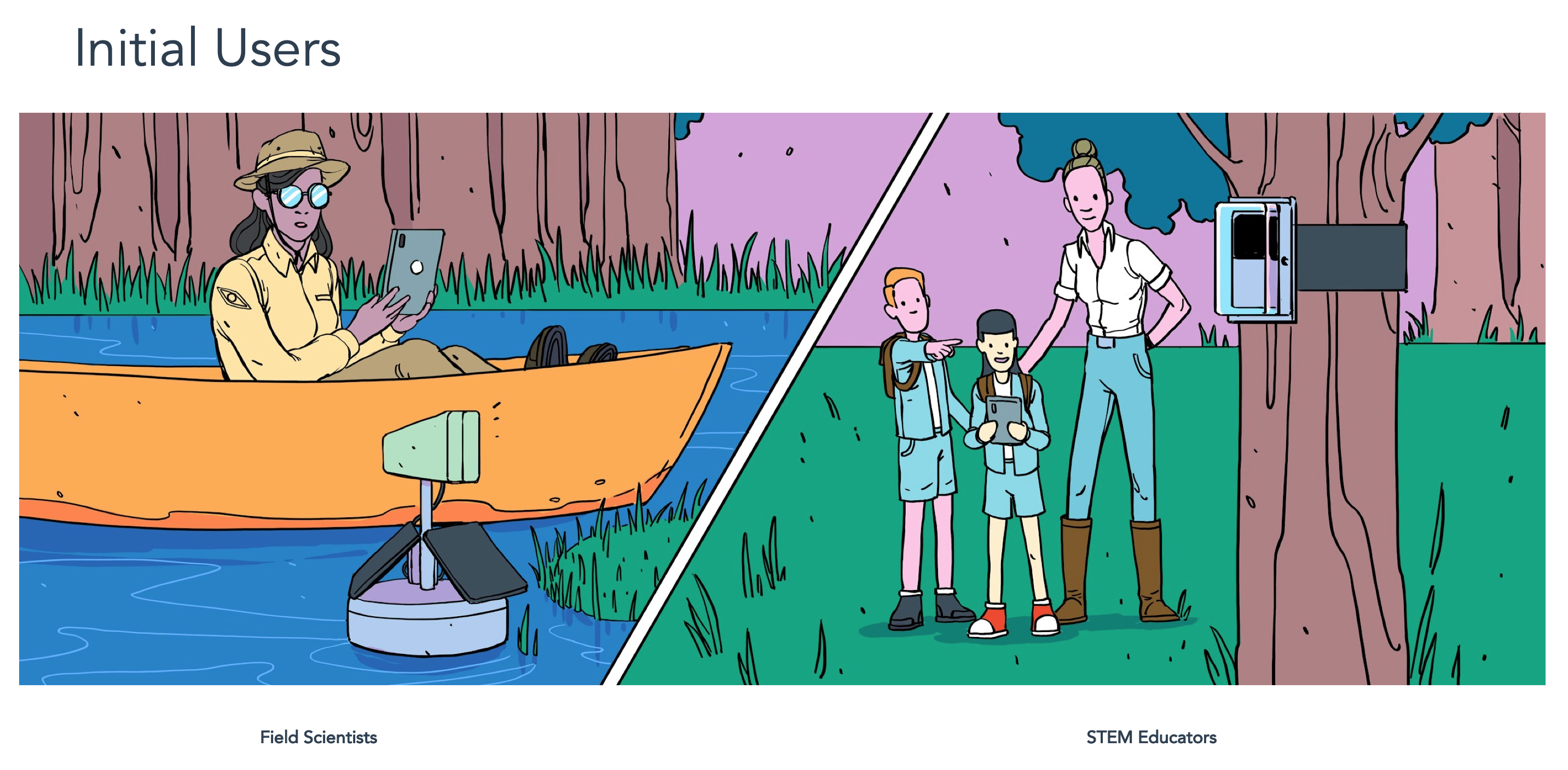
But as we ran through a rigorous user-centered design process, we started to understand that the needs were much bigger than that. There was a large community of passionate citizen scientists that were looking for more accessible scientific tools. We encountered a dedicated group of people working on environmental justice that wanted to have calibrated and verified tools to help document environmental decline. We heard from small municipalities that were eager to understand how air and water quality was changing for their citizens. We heard from naturalists, hackers, data artists, weather station enthusiasts, international conservation scientists, and many more - all of which were eager for a better approach. With FieldKit, we are working hard to provide them exactly that.
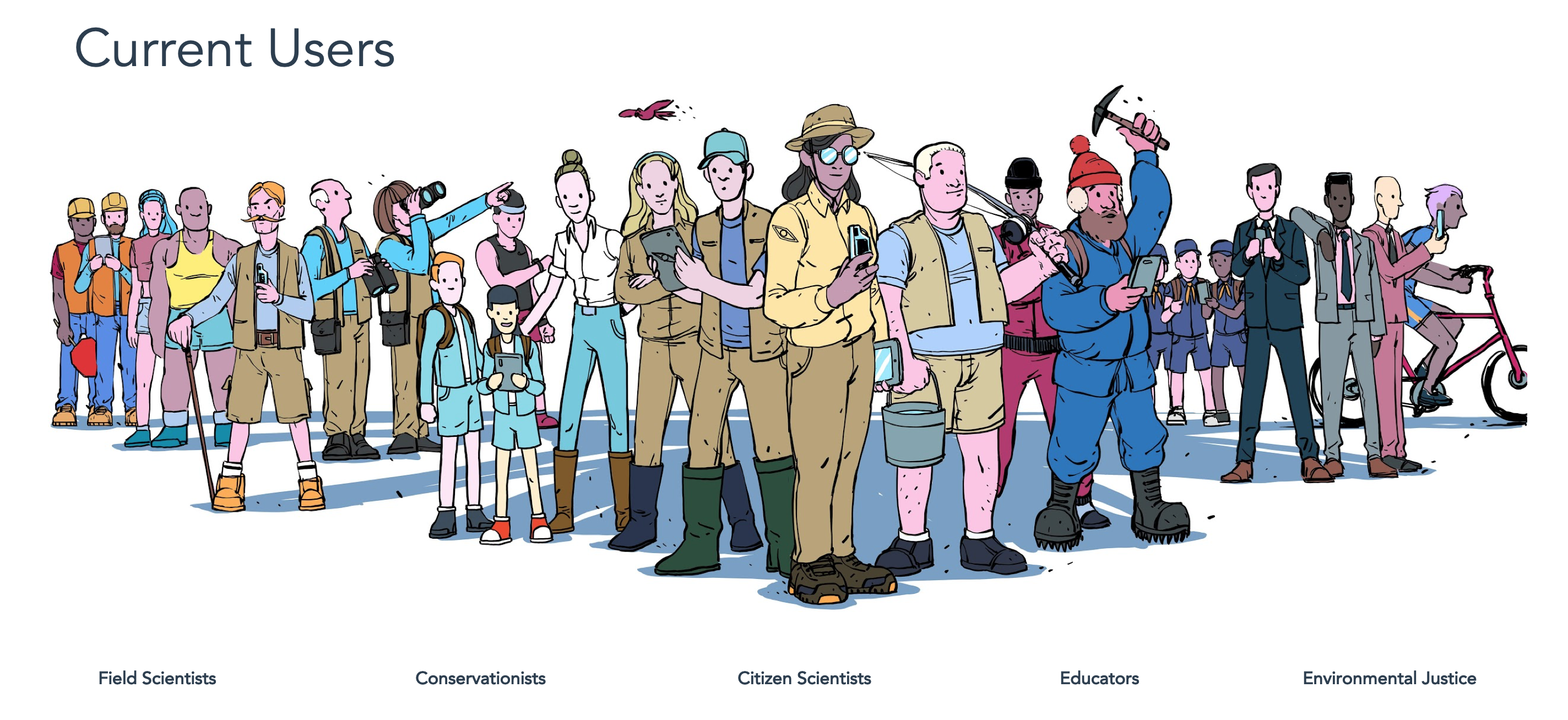
Based on those insights, we began to develop our principles behind what we were trying to build. Those are:
- Research grade hardware
- FieldKit stations are equipped with best-in-class sensors to collect data with precision and accuracy. Whether you’re working on a research paper or a class project, FieldKit lets you get the data you need.
- Collect, analyze, store and share
- Use the FieldKit platform to see data from your stations, explore patterns over time, and share what you’ve found with the world. We’ve made it easy to export FieldKit data to a number of popular formats and applications.
- A community of environmental care
- FieldKit brings scientists together with students and teachers, activists and community groups to share experiences, help each other, and discuss the environment through the lens of data.
- Open and extensible
- We’ve built FieldKit from the ground up to grow: stations are designed with modular sensors that can be added or removed. Because every part of our project is open source, new FieldKit-compatible sensor modules can be designed by anyone!
- Ethical and Responsible
- With Fieldit, your data is your data. We will never share or sell any of your information. Our stations are built with environmentally responsible manufacturing methods, and you can always send FieldKit hardware back to us (for free!) to be recycled and reused. We encourage all of our users to prioritize safe and careful interactions with the natural world and with people and communities.
The FieldKit Platform
At its technological core, FieldKit is three things: an ecosystem of modular hardware, the FieldKit app, and the FieldKit.org website. Each of these will be described in more detail in their individual posts below, but they all play an important part in gathering that scientifically-relevant environmental data that FieldKit is seeking to address.
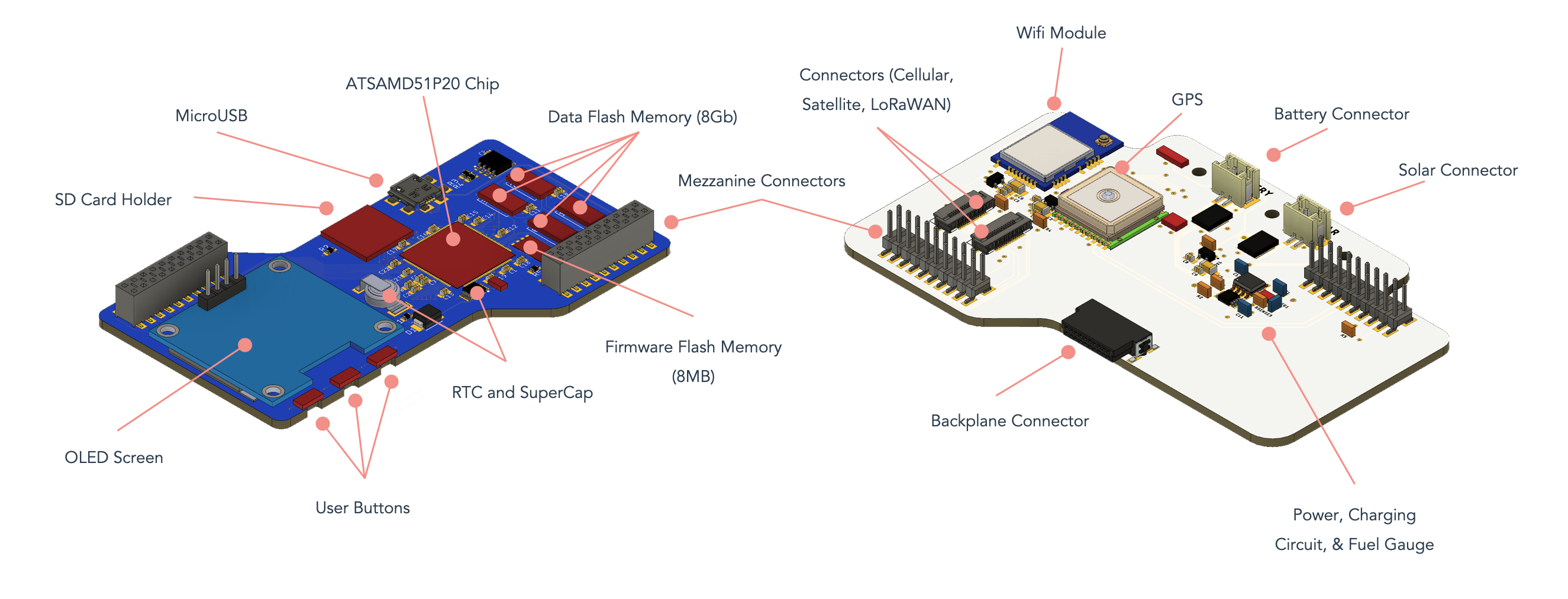
The electronics and it’s firmware (C/C++, with Arduino IDE compatibility) is fully open source and designed at Conservify. It is has been architected with modularity as a major design consideration, so that the capabilities can improve as additional sensors, communications radios, or power needs become available. The datalogger currently runs on an ATSAMD51 microcontroller, but we are working on a Linux SoC version as well. We have been engineering a series of sensor modules, hackable user-defined modules (to allow for other non-FieldKit sensors to be added), and radios (cellular, Iridium satellite, and LoRaWAN) that are all automatically recognized and supported in the firmware. The electronics also offers various different configurations depending on how many sensors are needed and the enclosure being used.
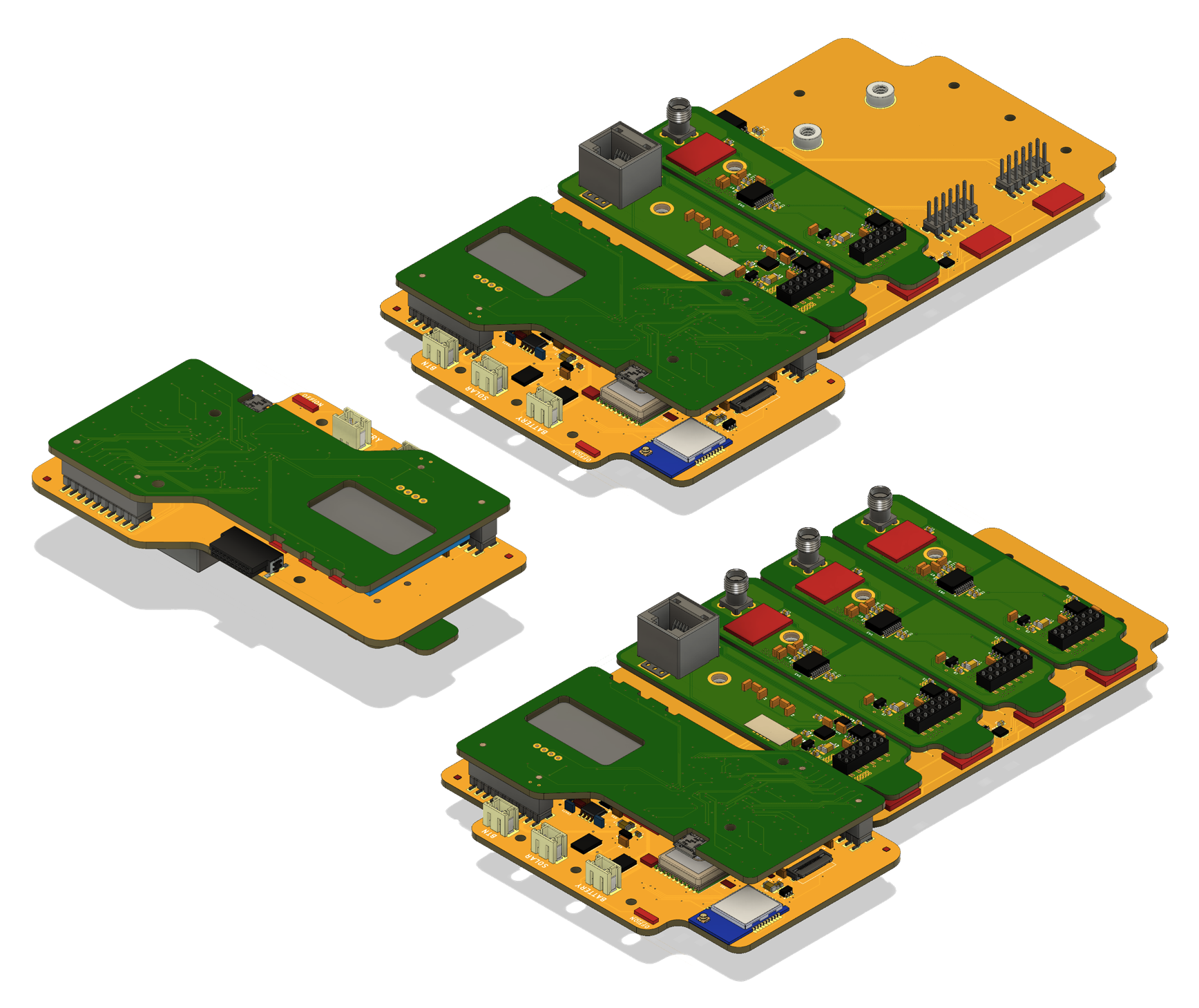
As a result of being frustrated with the suite of electronics enclosures currently available on the market, we decided to design our own FieldKit enclosure. We were looking to create something that had the feel and durability of protective cases (like Pelican) while providing flexibility in passthroughs for cables and other sensor hardware. This flexibility caused us to create an adapter plate that can be used in various ways: it can be drilled (or laser cut) for specific cable gland or bulkhead connectors or be configured to provide different mechanical attachment points. The enclosure includes a lock area, mounting flanges, and a friction-fit 18650 battery holding compartment. We are currently going through the injection molding process, but this case is 3D printable provided you have a print bed large enough. While this case has been optimized to work with FieldKit’s existing electronics design, there is no reason why this couldn’t be used more broadly on other projects.
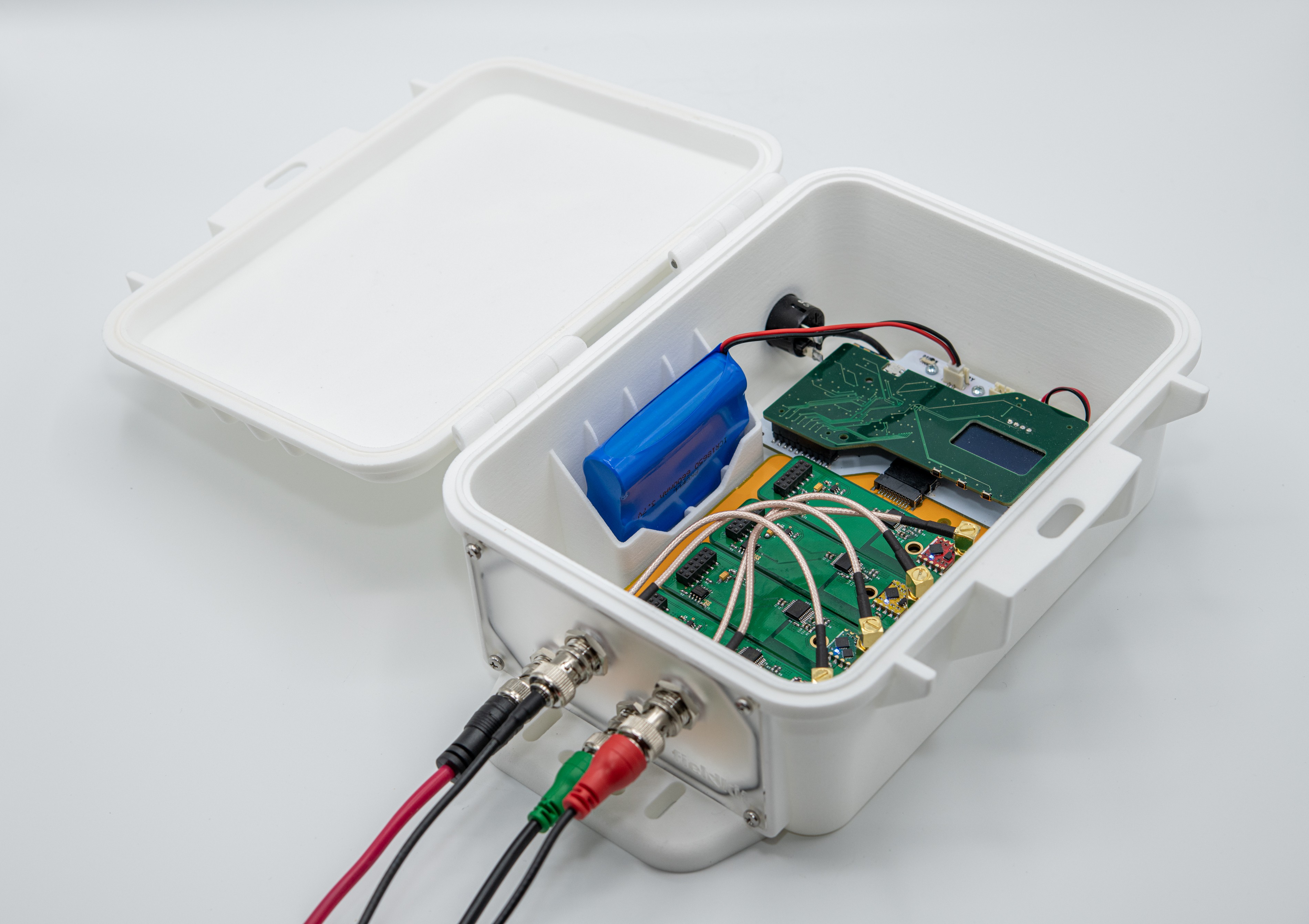
The FieldKit app is built mainly to provide a user-friendly interface to the hardware. The team here at Conservify is made up of engineers, designers, and hardware hackers (many of which have been part of the Hackaday community for years) but we realize that most FieldKit users want something that works well and doesnt get in the way. Through the app, we provide the ability to manage your fleet of sensors, configure each FieldKit station to your liking, calibrate sensors, visualize data, upgrade firmware, and download the data from onboard memory. One of the key uses for the app is to help guide a user through deployment of their device, where we have built the UI to integrate best practices in scientific sensor deployment and metadata collection. The aim behind this is to provide some provenance and rigor to the data collection, that could allow the possibility for that users FieldKit data to contribute to broader scientific understanding.
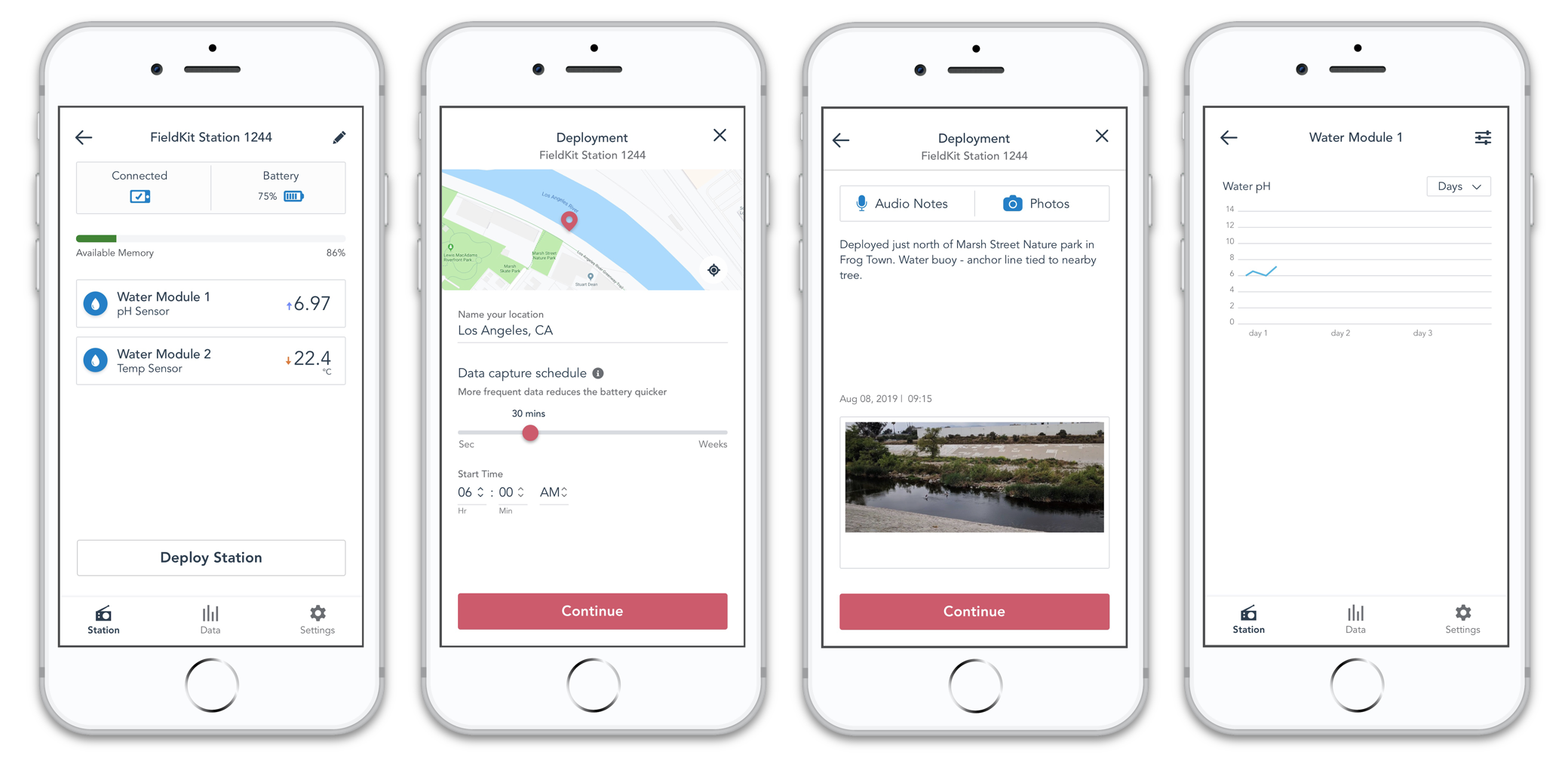
Through FieldKit.org, users will be able to do general administration (for project, organization, or deployments), advanced sensor management (including configuration and diagnostics), and map-and chart-based data visualization. We want the data on FieldKit to be interactive and shareable, so we are building in annotation capabilities, export functionality (in CSV, JSON, XML, Jupyter Notebooks, and more), and the ability to share links to data points and ranges through email or social media. As mentioned in FieldKit’s values, data privacy, ethics, ownership, and longevity are really important to us and we have subsequently built in some strong policies and features towards supporting those ideals.
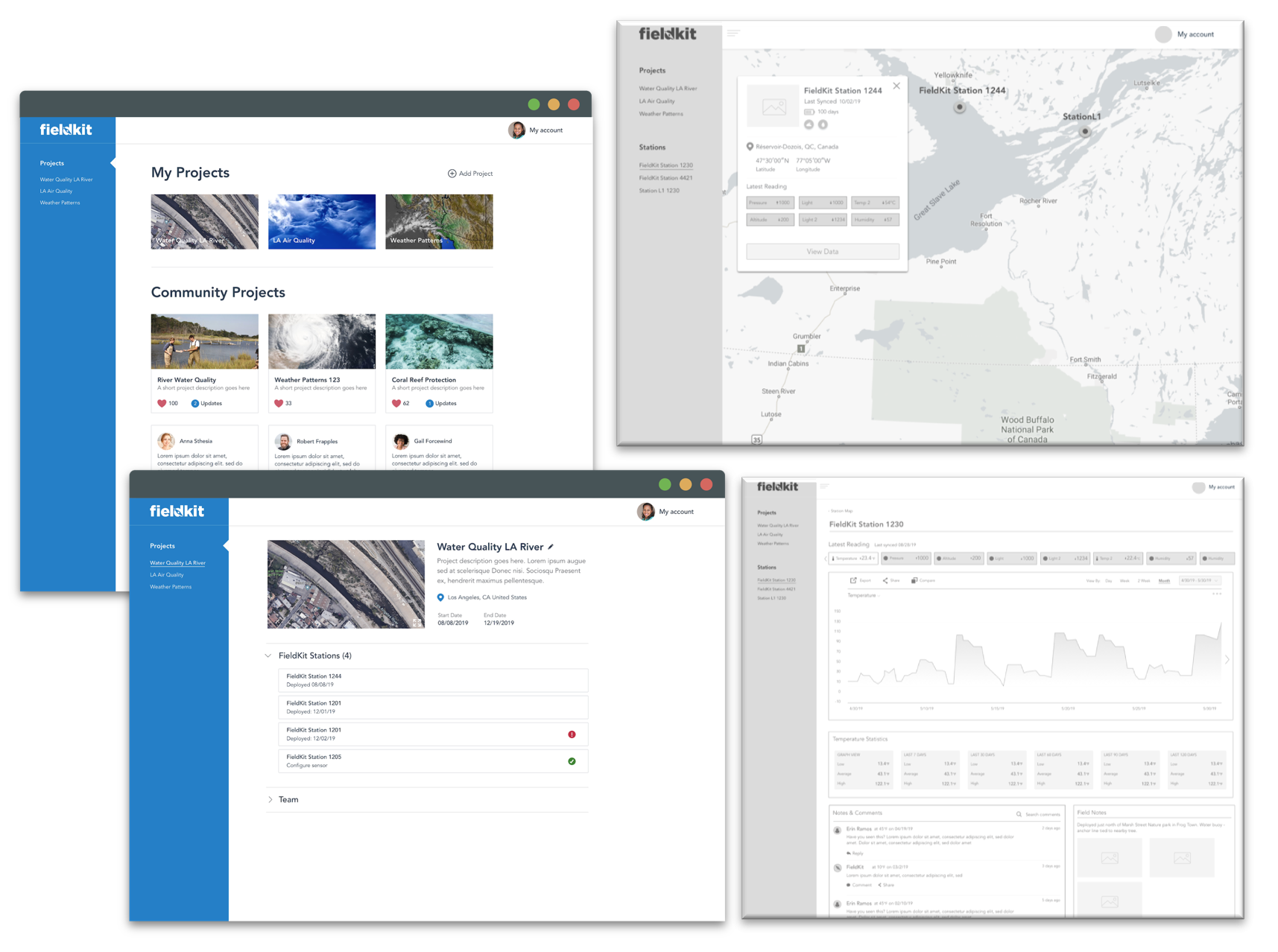
But beyond the technology, FieldKit is working hard to also become a community. Both a community for users, to help those who are looking to gather and understand environmental data, and for developers, to provide support and documentation to those who want to build on FieldKit and make it their own. We have interviewed a number of community managers to learn from how they supported the people who used their tools. We have also been deploying FieldKit prototypes alongside many partners to help to gather critical data in areas that didn’t previously have those capabilities. Our largest current deployment in across the Amazon Rainforest, where we are partnering with the Wildlife Conservation Society and Florida International University to deploy these with local scientists and indigenous communities.
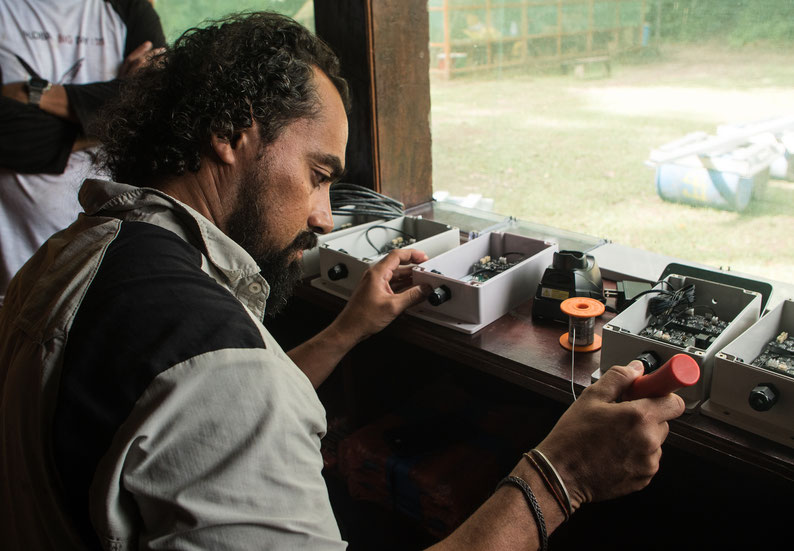
Through the end of the year, we plan to do test deployments of FieldKit in the Congo Basin with UCLA and in Montana with the American Prairie Reserve. We try to test this stuff in the field as much as possible, which allows us to set development milestones to support those deployments. Sometimes those deployments include internal testing by the team to try and unearth hardware issues or software bugs, like a recent field test in Griffith Park here in Los Angeles.
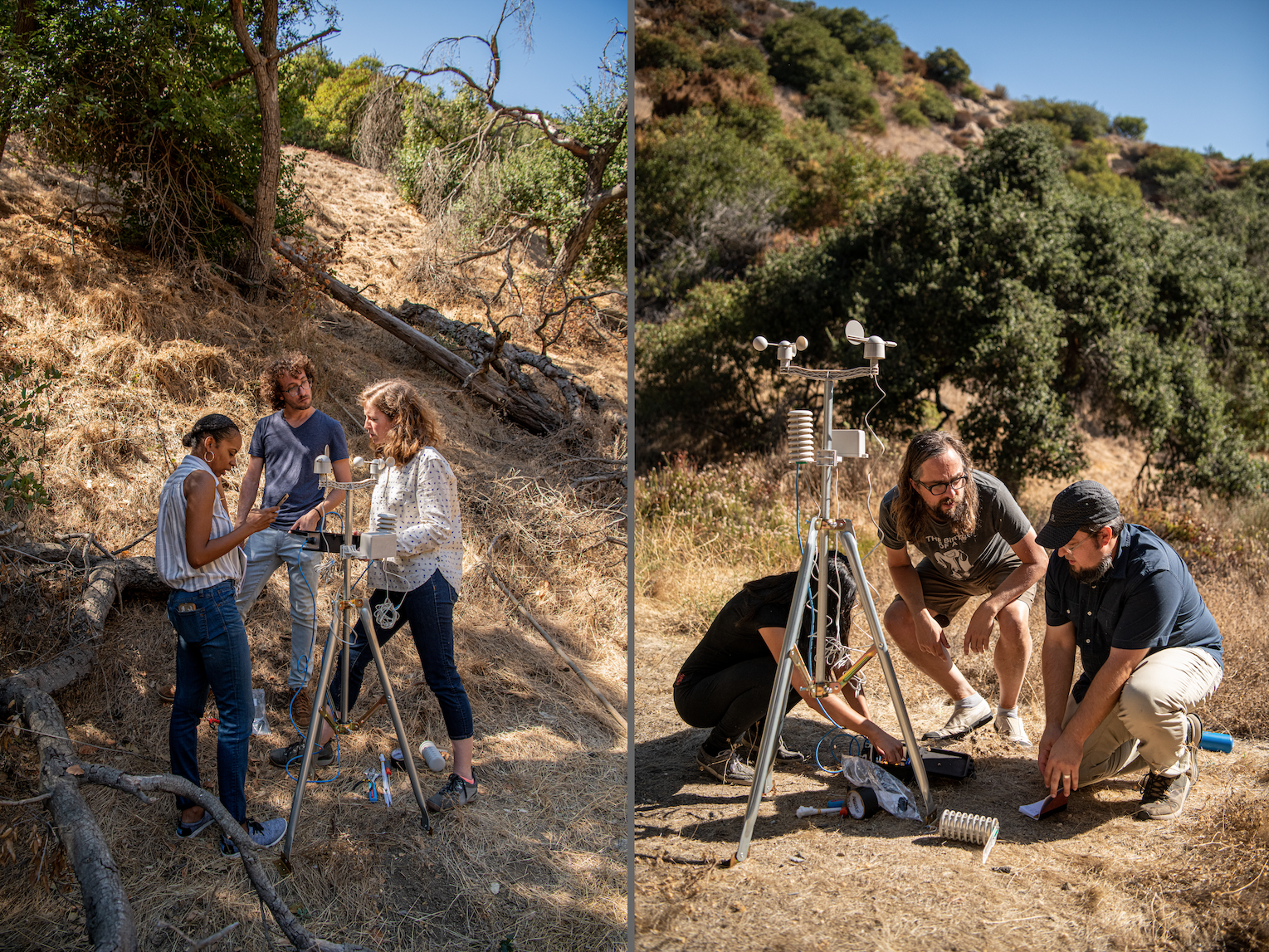
We are always eager to get more collaborators that are interested in helping us create better open science hardware and software solutions for those who need it. If you are a person like that, then email us at everyone@fieldkit.org.
 Shah Selbe
Shah Selbe